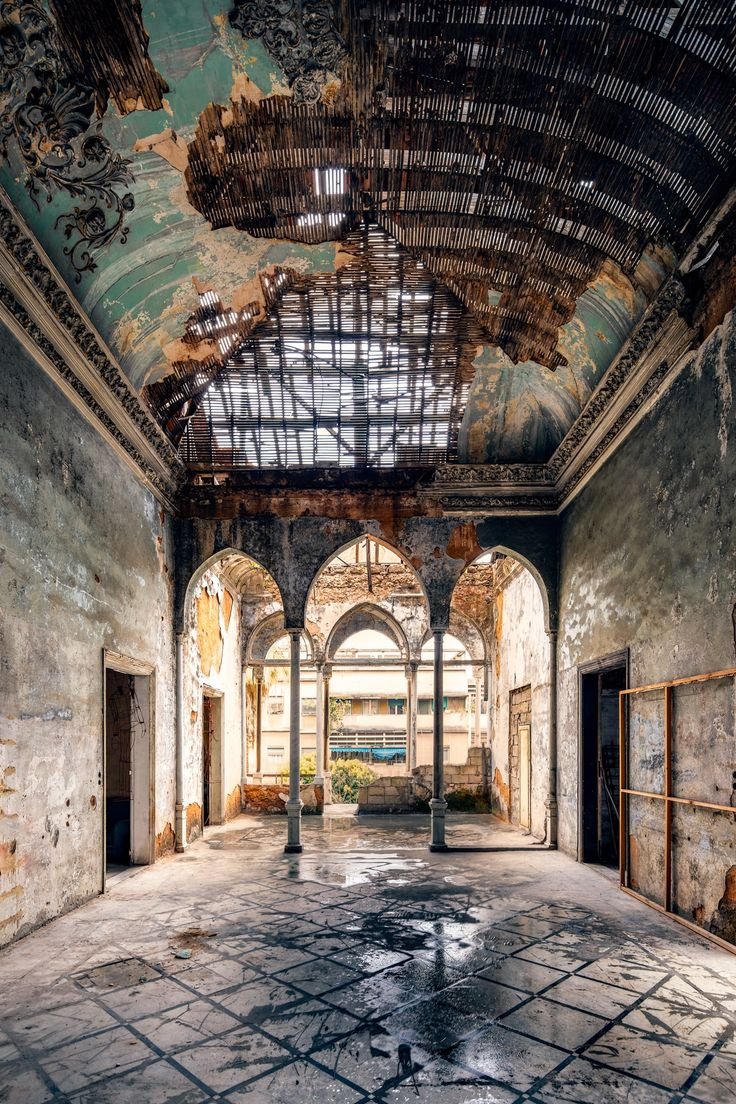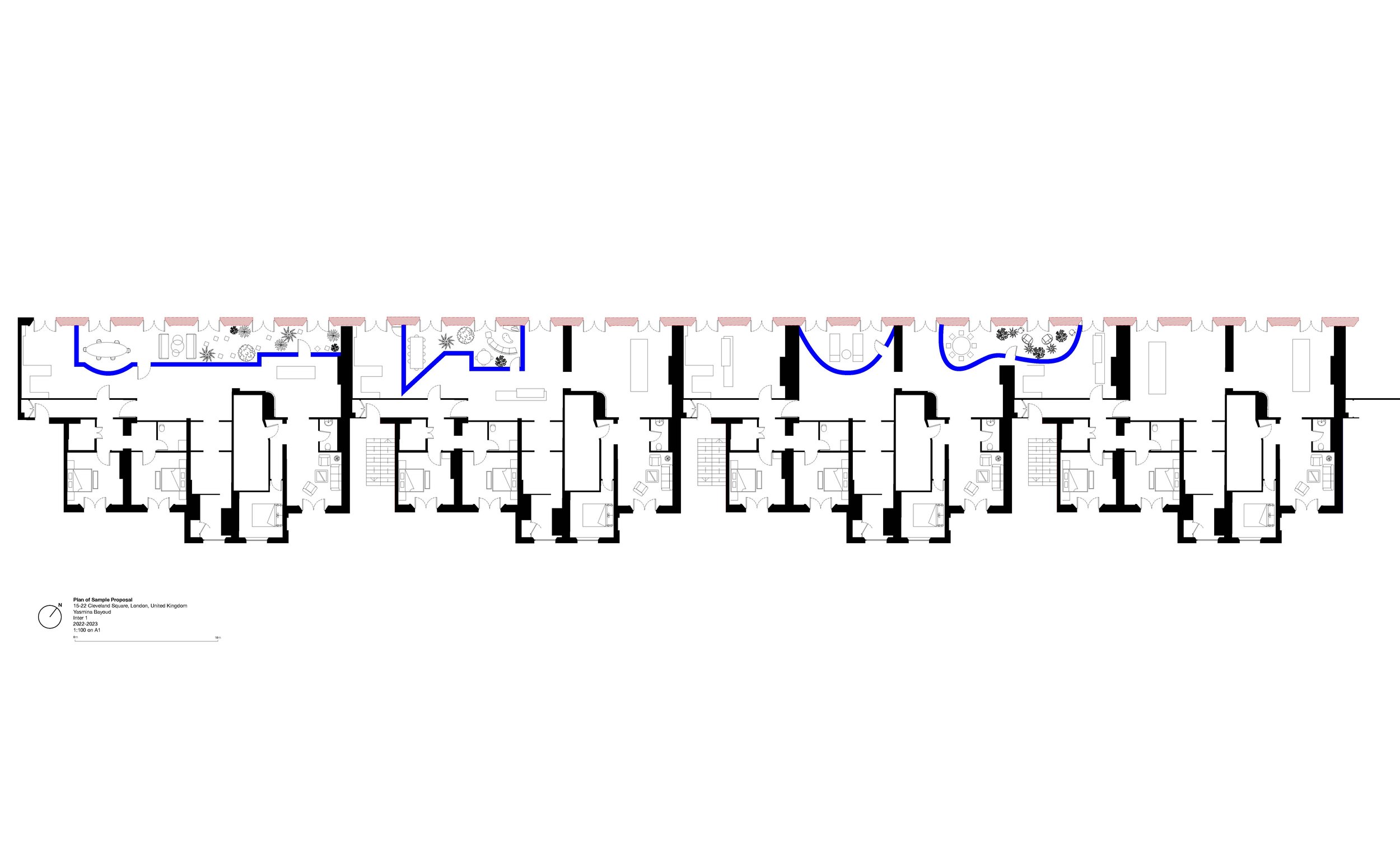
Architectural Design.
Collective Living
The facade is perhaps the most untouchable element in historic building preservation, yet much change seems to happen behind a retained public face. Heritage regulations require that changes to facades with historic significance be conducted through the principle of “like for like”: the new must resemble what it substitutes.
This project builds upon this principle and stretches its potential in search for its hidden opportunities. Such opportunities are found in how a like-for-like modification of a facade can have more profound implications for the interior layouts of residential spaces, and in turn on the lifestyles supported by the architecture. This is tested on a stuccoed terraced block in Bayswater, one of the many living testaments of Regency London that still contribute to the shared imaginaries about the city. Not coincidentally, those terraces are largely taken over by the tourist industry and turned into hotel structures that over the years have adapted the interiors of what are today heritage listed buildings while maintaining the original outlook of their facades.
Pushing the boundary between intimacy and publicity, the project accelerates the process of change by operating a radical like-for-like material adaptation. The substitution of traditional bricks with glass bricks gradually eats into the individual homes to carve a shared gallery behind the new façade, eventually questioning the survival of the original rigid subdivision into separate households.
Client
Cleveland Square Residents
Year
2023





